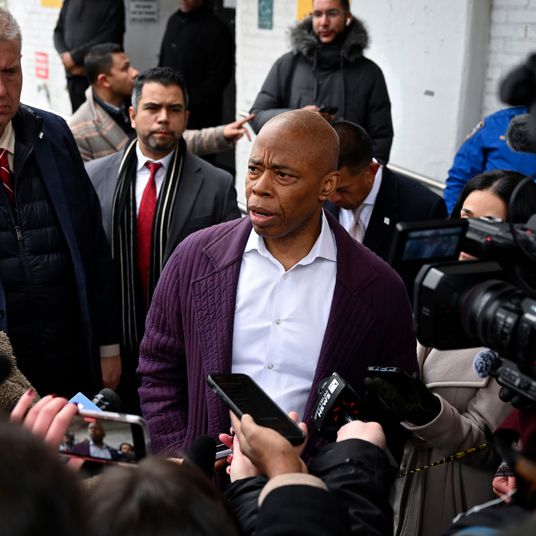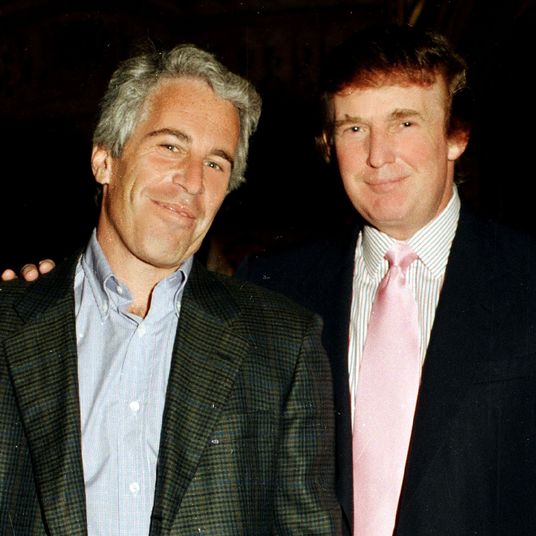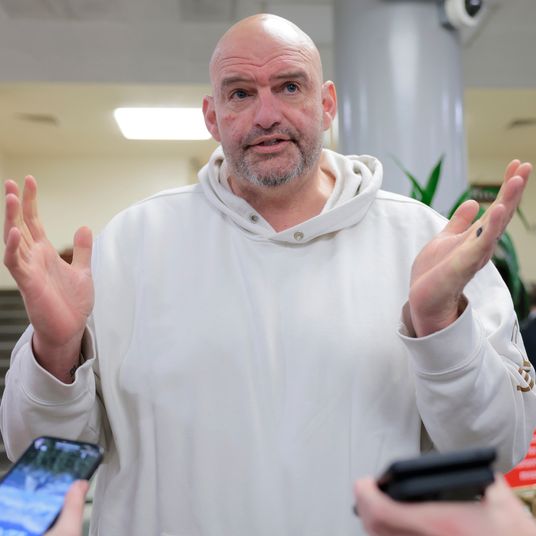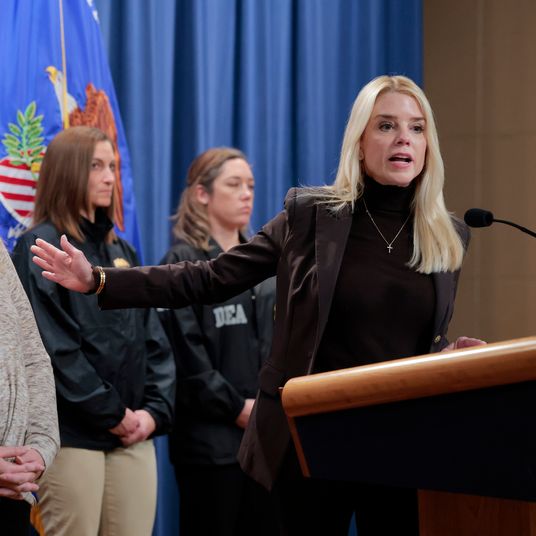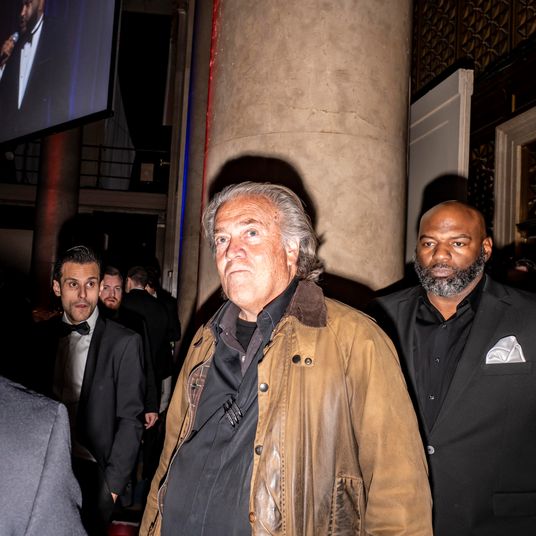
This is adapted from Sarah Jones’s forthcoming book, Disposable: America’s Contempt for the Underclass, available from Avid Reader Press on February 18.
Earla Dawn Dimitriadis sought beauty in life and looked for it on her deathbed, her daughter, Jennifer Ritz Sullivan, said. No stranger to ugliness, Earla wanted the happiness that others had often denied her. “She grew up in a poor household with a lot of abuse at the hands of her parents,” Jennifer explains. At the age of fifteen, her parents forced her out of school and into a marriage that turned abusive. A determined Dimitriadis earned her GED when she was in her thirties and attended night classes at a local community college before getting a master’s degree from the University of Phoenix at age fifty-eight. She worked hard at a variety of jobs, but she especially loved working with children as a teacher’s assistant.
“This woman was beyond creative,” Jennifer remembers. Give her a toilet paper roll and some construction paper and Earla could create anything. For Halloween, her children always had handmade costumes. She had a lively spirit, Jennifer adds. “My mom would go to shows with me a lot, and we’d be rocking and dancing and singing and just in the moment, and not worried about what anybody’s going to say,” she says. When she came out as queer, Earla wore a rainbow pin to support her daughter.
In 2020, when the virus immobilized the nation, Earla took her health seriously and rarely ventured out. She got sick anyway. From her hospital bed in the ICU, she posted regular Facebook updates along with photos of bedazzled butterflies and dragonflies: small joys in a bleak place. But her prognosis was never good. “By the time she got there, there was damage done to her lungs and she had pneumonia set in,” Jennifer says. “So she wasn’t able to talk due to the lack of oxygen.” She and her sister arranged a final, devastating call with their mother. For fourteen minutes, Earla made a gurgling, almost suffocating sound in between gasps of conversation. She told her daughters that she didn’t want to be on a ventilator, that she was in too much pain, and that she was ready to be done.
There was more to say and not enough time. “She told us that she loved us, that she had a gift waiting for us, and my mom and my sister and I just stayed on the phone until she couldn’t do it anymore,” Jennifer continues. Dimitriadis died of COVID on December 5, 2020.
She left behind a community united in appreciation for her life. “When she passed, I had two different people tell me that she helped them in domestic violence situations. And my mother, with all the abuse she experienced, was very aware of other people’s circumstances,” Jennifer says.
Jennifer believes she knows who to blame for her mother’s death. Dimitriadis was careful during the pandemic, keeping close to home to protect herself, but home would not stay a sanctuary: according to Jennifer, a Trump-supporting relative who refused to wear masks brought the virus to Dimitriadis. Jennifer says that even after Dimitriadis passed away, that relative still did not believe that COVID was a major threat. Right-wing rhetoric fostered a delusion immovable even by Earla’s death.
Jennifer is still angry. Not only did the politicization of COVID contribute to her mother’s death, it complicated everything that followed. “I don’t think people realize behind every COVID death, there’s this catastrophic grief that is often interlocking with so many different things because we’re complex human beings,” she explains. While she mourned her mother, she feared for her husband, an essential worker who stripped at the back door every day because of the possibility he’d spread COVID. When a death is political, grief is a territory to defend. “People fat-shamed my mom in her death, and I’ve been called a crisis actor. I’m like, ‘Why would I fucking put myself out there knowing the hatred that’s going to be spewed at me, and the comments?’” Jennifer wonders. Melissa Powers, who lost her mother, Deborah Smith, to COVID, says she encountered a similar hatred. “I just started dropping people off my Facebook friend list and blocking people out of my life, because they’d be like, ‘COVID’s a hoax, and it’s all overblown, and only people that are old and frail are dying.’ Talking about people like they don’t matter because they’re old,” she adds.
Melissa and Jennifer stare down a conservative movement convulsed by the pandemic. For the right, so skeptical of experts, government intervention, and collective action, the pandemic was a political problem. Their solution was an active and collective neglect. A real response would have shaken the movement to its foundations. Trump, then, could only intermittently endorse public health measures. Meanwhile, conservative activists and intellectuals cried out against lockdowns, masks, and vaccine mandates to provide the president with the cover he needed to retreat and, later, to undermine his liberal successor. They couched their words in the language of liberty and populist fervor. Patrick Deneen, the post-liberal academic, once said that “elites” favored lockdowns in opposition to the “masses.” Quoting Christopher Lasch, he said that the masses understand “inherent limits on human control over social development, over nature and the body, over the tragic elements in human life and history.” R. R. Reno, the editor of First Things, tweeted that “mask culture if [sic] fear-driven” and that “it’s a regime dominate [sic] by fear of infection and fear of causing of infection. Both are species of cowardice.”
The right cared nothing for either Jennifer or Melissa, or for their mothers. Their pain only made them targets in a broader conflict. The American right wing revels in a war on the public sphere. As the writer Matthew Sitman put it in an essay for Gawker, “The right benefits from people becoming more isolated, hunkered down, wary of others, and doubtful that a better future can be built. It is to such people that the reactionary message appeals: the best you can hope for is to hoard what you have, and attack the shadowy forces and alien others that you’re told imperil you and your livelihood. Solidarity and generosity are turned into risky wagers not worth taking.” Jennifer is more than a target to the right. Once an activist for the group Marked by COVID, she remains an advocate, speaking out about her mother’s death and pushing for a COVID remembrance day in her home state of Massachusetts. She is therefore a threat. By asking the public to remember the dead — and why they died — she defies a plot that stole her mother’s life.
Most Americans supported lockdown measures and mask mandates at the time, just as most American voters had rejected Donald Trump at the ballot box in 2016. Though Trump liked to call himself a man of the silent majority, he only ever represented a febrile minority. Yet that minority inflicts real damage on themselves, and on bystanders like Dimitriadis. As COVID spread, conservatives weren’t merely disruptive; they were trying to break society apart. Conspiracy theories foretold collapse; now the fringe was forcing a war. In the process, the far right found common cause with conservative intellectuals, the so-called mainstream. A skepticism of democratic institutions has given way to pure authoritarianism. In previous decades conservatives were more willing to work within democratic means, but the pretense is over. The right fractures old bonds to make way for a new order — one they aim to control.
COVID denialism is a rejection of society, which has always been more than a grouping of relationships. Society is an idea, and during COVID, an egalitarian ethos clashed directly with an antidemocratic view. There were casualties, including Dimitriadis. To the right, their deaths are an acceptable loss. A disposable person has no innate rights, no meaning beyond the profit they can generate for others. The right’s new order would make more people disposable, with little say over their working conditions let alone the trajectory of the nation.
To understand the right’s reaction to COVID, look to its past. Though we may associate “crunchiness” with the left, there is a long history of medical skepticism and “crunchy” thinking on the right, and on the far right in particular, as the historian Kathleen Belew noted in a piece for the Atlantic. “Consider Coeur d’Alene, Idaho, the home of the white-separatist compound Aryan Nations,” which simultaneously appealed to “environmentally inclined leftists attracted to the scenic lakes and mountains,” she added. “Scholars have spent ample time on other alliances between neighbors in this period — such as the way the white-power movement radicalized its rural neighbors affected by the farm crisis of the 1970s.” Both groups can fixate upon “ideas of purity, an interest in survivalism, and a deep distrust of the government,” albeit for different reasons, and water fluoridation emerged as a point of agreement. Some progressive environmentalists believed fluoride threatened human bodies and ecosystems alike. Libertarians opposed fluoridation on individual-rights grounds. To members of the John Birch Society, fluoride was a communist plot to poison red blooded Americans. White nationalists consumed by thoughts of a coming race war “worried that fluoride would make people docile, such that revolution against the state and race war would be harder to accomplish,” Belew wrote.
“I often think of the far right as the people who beta test talking points and moral panics, so they beta tested the fluoride thing,” explains Seth Cotlar, a professor of history at Willamette University who has studied the right. That fringe antifluoridation message gained some traction, he adds. “When we talk about fluoride as this evil conspiracy to sap you of your bodily purity, people’s ears perk up and they hear it. They respond to it, and they’ll show up at city council meetings and get really angry about it. It becomes a way to just throw a monkey wrench in public interest governance, which is what these fascists are angry about.” For the far right, antifluoridation also looked like a means to transcend the fringe and earn the mainstream consideration they otherwise lacked. “They learn that a very small number of very dedicated people, who show up with a barrage of what looks like scientific information, can pretty easily circumvent what feels like an emergent consensus, so they do it and they push it,” he says.
The right’s antifluoridation tactics capitalized upon the public’s Cold War fear of communism. Many were openly anti-Semitic and white nationalist, eager for a way to popularize their racist ideals. Although activists were prone to overstate their influence, they were able to dissuade some locales from fluoridating water supplies despite the clear public health benefits of doing so. Matthew Dallek, a political historian at George Washington University and the author of Birchers: How the John Birch Society Radicalized the American Right, sees echoes of old Bircher obsessions in today’s conservative movement. In addition to the suspicion that communists would use fluoride to poison an unsuspecting American public, “there’s a somewhat milder version of it, which is basically that this is government trying to control our lives.” Birchers latched on to the belief that too much fluoride would yellow the teeth as proof it was dangerous for human consumption. “But again, they sort of latch onto this as the rhetoric of ‘it’s a choice.’ It should be a choice in the same way maybe the vaccines should be a choice for small kids. And so that, I would say, has been a significant through line in modern times,” he adds. “You can draw a line, I think, between the conspiracy theories about fluoride and the vaccine and mask denialism.”
Dallek sees further echoes in the Society’s promotion of laetrile, an extract found in fruit seeds such as apricot that could, proponents claimed, cure cancer. One Birch Society leader, a urologist, prescribed the extract to a patient with cancer, who later died; the family sued. “The reason I think this story is relevant is that there are even doctors and dentists who are supposedly scientists or people of science who engage in this kind of public health denialism and conspiracy theories,” Dallek says. “It’s not alternative medicine, it’s really a denialism. It’s not thinking about yoga or meditation to calm anxiety, which is a legitimate field of study, or psychedelics to treat depression. These are things that just have no real basis in scientific reality.” Though membership in the John Birch Society would decline over the years, its conspiratorial ideas persisted.
Beyond the John Birch Society, the right wing’s commitment to public health denialism goes back decades and even centuries. Dr. David Gorski, a surgical oncologist who is the managing editor of the website Science-Based Medicine, and who has monitored the anti-vaccine movement for nearly two decades, tells me that there has always been a rightward tilt to vaccine hostility. At anti-vaccine protests in the 1800s, you’d hear familiar messages about the tyranny of vaccine mandates. Though there are “enclaves” of left-wing vaccine resistance in places like Marin County, California, he says, “beginning sometime around the rise of the Tea Party movement, I started noticing the shift. Even then, some of the most prominent anti-vaxxers were conservatives.”
In 2007, Texas offered a glimpse of alliances to come when a coalition of right-wing organizations and parents formed against then-governor Rick Perry, who’d issued an executive order requiring the Gardasil HPV vaccine for girls ages eleven and twelve. The vaccine, which was created by Merck, protects against some cancer-causing forms of HPV. Many conservative groups, particularly Christian right groups, went on the attack. To the Eagle Forum, Perry’s order represented unforgivable governmental overreach — especially for a Republican politician. In one 2007 editorial, the late Phyllis Schlafly attacked Perry, citing reports that his reelection campaign had received $5,000 from Merck’s political action committee. Not only had Perry been bought, she insinuated, his order “would force the vaccine on good girls who don’t engage in premarital sex and don’t need the vaccine.” (Bad girls would have to suffer.) Texas legislators overrode the executive order, but Perry defended his decision until a presidential campaign event in 2011, when he admitted he hadn’t done his research. “I always thought that it should have been the parents’ choice,” said Tonya Waite, the director of the East Texas Abstinence Program, in a 2011 interview with NPR. “I was upset that there wasn’t more time for me to get my facts together so that my schools and educators were comfortable, and we were all on the same page.” Yet on the grassroots level, it was the right that attacked the Gardasil vaccine, using the language of parental rights and government overreach — slogans that would come to saturate the right wing’s attacks on other vaccines and public health interventions.
Gorski also cites the example of former representative Dan Burton, an Indiana Republican and proponent of the debunked belief that a mercury-based preservative used in some medicines and vaccines contributed to a rise in autism. Before Burton’s retirement in 2013, he “held at least 20 hearings examining the potential link between the two during three terms as chairman of the Oversight and Government Reform Committee and one as head of the panel’s sub committee on Human Rights and Wellness,” his office told Roll Call in 2012. Burton was a member of the Tea Party Caucus, a group that, nationally, started building alliances with anti-vaccine activists during its rise. “Around that time, maybe 2011, 2012, anti-vaxxers started appearing on Fox News. Not as regularly as they do now by any stretch of the imagination, but they did start to appear on Fox News with credulous interviews,” Gorski says.
Within a few years, a legislative battle in California would “turbocharge” the anti-vaccine movement’s shift to the right, he adds. In 2015, Jerry Brown, then the Democratic governor of California, signed SB 277 into law, which removed most nonmedical vaccine exemptions for schoolchildren. “During the debate over that law and the passage of that law, the anti-vaxxers first got organized. Second, they really started harping on anti-government regulation: ‘Government can’t tell me what to do,’ a government overreach theme which appealed to conservatives” even if they weren’t yet anti-vaccination, Gorski explains. That attitude made conservatives sympathetic to conspiracy theories about public health. The longer conservatives stayed in that milieu, he says, the more they absorbed its pseudoscience and conspiratorial thinking. In time, they became true believers.
Likewise, as that fringe crept toward the center of the conservative movement and Republican Party, those conspiracists became valuable to the right’s larger war. Eager foot soldiers, their paranoia could be directed not only against certain public health interventions but against government action in general.
Dorit Rubinstein Reiss, a professor of law at UC Law San Francisco, tells me that historically, the resistance to vaccines and vaccine mandates was not really partisan. SB 277 began to change that, she notes. “We’ve seen a growing partisan trend with anti-vaccine activists successfully tying opposition to vaccine mandates to the language of liberty,” she explains. The year SB 277 passed in California, Trump announced his candidacy for president, an unhappy coincidence that would have ramifications for the popularity of conspiracist thinking in the conservative movement. Trump ran alongside Republican primary candidates such as Senator Rand Paul of Kentucky, who’d long pandered to anti-vaccine and anti–public health sentiments on the right using the same language of personal liberty. Gorski also cites the growing influence of the parental rights movement, which gained energy during the Trump presidency over not just the subject of vaccines but over hysterias like the alleged teaching of critical race theory in public schools and “grooming” moral panics centered on the existence of LGBTQ teachers and trans student athletes. In 2019, when California attempted to pass a new law that would have made it more difficult for parents to exempt their children from vaccines on medical grounds, Gorski says far-right militias marched alongside anti-vaccine activists.
Anti-vaxxers have become useful tools for the right, partly because they share tactics and goals. “Disaster capitalism and disaster spirituality rely, respectively, on an endless supply of items to commodify and minds to recruit,” wrote Derek Beres, Matthew Remski, and Julian Walker in their book Conspirituality: How New Age Conspiracy Theories Became a Health Threat. Beres, Remski, and Walker showed that the fusion of conspiratorial spirituality and right-wing politics promoted COVID denialism to millions. A member of the anti-vax fringe may cite a spiritual or medical rationale, but as they rail against an elite cabal, they can sound like any far-right congressman. These days, the congressman may welcome the help. Anti-vaxxers have done much of their work for them. Vaccines are the product of a top-down war on the common man, or so opponents claim. The right can then tap into the same language, the same fears, and disguise its pro-business loyalties. So Republicans raged against lockdowns, and following Trump, minimized the pandemic’s destruction. Conservatives might argue they protected the public sphere from overzealous health officials. But by undermining public health measures in the face of a pandemic, they sacrificed the public to the virus, in the name of the business interests and their profits.
With time, conservative and libertarian think tanks professionalized the task of COVID minimization and, sometimes, outright denial. The libertarian American Institute for Economic Research organized the Great Barrington Declaration, an open letter named for the Massachusetts town where the institute is based. Signatories claimed that lockdown measures were “producing devastating effects on short and long-term public health” and that normal life should resume for most. As an alternative, it advocated for “focused protection,” which would, it claimed, “allow those who are at minimal risk of death to live their lives normally to build up immunity to the virus through natural infection, while better protecting those who are at highest risk.” Released in October 2020, before vaccines had become available, the medical and scientific communities largely condemned the Declaration as dangerous pseudoscience, but it found sympathetic ears in the Trump White House.
False as the right’s claims may be, the movement’s leading figures know how to spin a powerful tale. Fear is the glue that binds the movement together: the fear of threats from below, and the fear of lost power. To the right, the public sphere is a threat; democratically accountable institutions are the enemy. Considered superficially, there’s no link between the right wing’s opposition to basic public health interventions and its war on public education, but in both cases, the word “public” is a tell. A fixation on individual rights provides a thin disguise for anti-government views that can quickly veer conspiratorial, as it did when the right took on fluoridation. “The idea is, look, if people want to take fluoride, fine. Give your kid fluoride pills. But putting this in the water forces everybody to do it whether they want to do it or not,” Cotlar says. Some far-right activists would try to wage a campaign against the polio vaccine, albeit with far less success.
Viewed from the right, democratic institutions intended to safeguard the public’s good merit suspicion and, ultimately, control and destruction. The right’s renewed obsession with parental rights thus reminds Dallek of the Birchers. “The arguments are basically identical,” he says. Robert Welch, the society’s founder, urged followers to “take the war to the communists in their communities, and one of the best ways to do that was to take over their local school boards.” Welch, who was convinced that the United States, and indeed freedom itself, was threatened by secret communists embedded in the U.S. government, believed that public schools “were indoctrination camps, in a sense,” Dallek explains. Though the American Conservative Union blacklisted the group from the Conservative Political Action Conference, better known as CPAC, in 2012, the Birchers reportedly had a booth at the event in 2023 and 2024. David Giordano, a field coordinator for the group, told the Atlantic in 2024 that Trump made the Birchers seem mainstream. COVID, he added, woke him up further. “I’ve been a member since 1994. And I said to my wife, ‘I wonder if this new world order will come in my lifetime,’” he said. When the pandemic struck, he decided that the “new world order” had indeed arrived. He has never been vaccinated, and refused to wear a mask. As conspiratorial fears of a new order spread, some on the right have begun to sour on democracy altogether. At CPAC the same year, Twitter troll and conspiracy theorist Jack Posobiec welcomed attendees with an alarming message. “Welcome to the end of democracy. We are here to overthrow it completely,” he said. “We didn’t get all the way there on Jan. 6, but we will endeavor to get rid of it.” He later claimed that he was being satirical. “We’re not destroying all of democracy, just their [Democrats’] democracy,” he said, which isn’t much of a distinction.
The same year, Texas Monthly profiled billionaire oilman and Republican donor Tim Dunn, who purportedly believes that the right is locked in a holy war with “Marxists.” In April 2020, Dunn coauthored a letter urging Trump to reopen the economy, though vaccines were not yet available. An “indefinite shutdown” would “steer the country toward socialism,” he and his fellow writers claimed, and Americans should proceed as they individually saw fit. “Let vulnerable populations continue to self-isolate with all the support their communities can provide,” they wrote. “But also let our economic activities resume in order to restore business and consumer confidence quickly.” Market demands took priority over COVID mitigation, no matter the human cost.
As Dunn fights with his pocketbook, conservative activists like Chaya Raichik of Libs of TikTok wage war on other fronts. The triad that compels Dunn is visible in Raichik’s efforts, too. On her popular social media accounts, Raichik drums up constant outrage over the supposed excesses of trans and queer people, framing them as unique threats to the well-being of children and society itself. She’s also indulged frequently in COVID denialism and has attacked efforts to mitigate the pandemic. On her Libs of TikTok account, Raichik has said that masks don’t work and railed against lockdowns; on her personal Twitter, she has said that she would be “terrified” if she were vaccinated against COVID.
Raichik’s obsessions represent a coherent worldview. She, and conservatives like her, are hostile not just to science, or medicine, or education, but to the notion of secular communal life in the United States. “Secular” in this case does not mean atheistic but neutral, a society that welcomes religious Jews like Raichik alongside the LGBTQ people she so despises. Raichik and her allies oppose such egalitarianism. On a Tucker Carlson appearance where she first revealed her face, Raichik bragged of getting about a dozen teachers fired and referred to the LGBTQ community as “this cult.”
Raichik isn’t interested in coexistence. Nor is Carlson. Nor are their allies. They seek the elimination of their enemies in a bid for total political control. As the groups they harass bid for equality, Raichik, Carlson, and other conservatives reassert a hierarchy with themselves at the top. The conservative project can also be deadly to its adherents. A 2022 study published in Health Affairs found that “counties with a Republican majority had a greater share of COVID deaths through October 2021, relative to majority-Democratic counties,” NBC News reported at the time. A working paper from the National Bureau of Economic Research also found that excess deaths in Florida and Ohio were 76 percent higher among Republicans than Democrats. Conservative rhetoric and policy manifested in greater vaccine hesitancy among Republicans and a partisan reluctance to comply with mask mandates and other public health interventions, which may have contributed to the deaths.
Nevertheless, Republican politicians — and their supporters — appear increasingly committed to vaccine hostility alongside COVID denialism, and the attitudes that cost Earla Dawn Dimitriadis her life are gaining strength. A 2022 poll from KFF revealed that seven in ten adults thought that healthy children should be vaccinated for measles, mumps, and rubella before they can attend school. That’s down from 82 percent who said the same in a 2019 Pew Research Center poll. “Among Republicans and Republican leaning independents, there has been a 24 percentage-point increase in the share who hold this view,” KFF noted. COVID denialism is now a mainstream conservative position. Florida governor Ron DeSantis ran for president on it, and in January 2023, then-speaker Kevin McCarthy appointed Representative Marjorie Taylor Greene of Georgia to a House subcommittee investigating the U.S. government’s response to COVID. Greene, a far-right Republican, is prone to various conspiracies. (In 2024, she also gave an interview to the New American, the Birchers’ magazine.) Vaccination rates in America remain high, and outbreaks of vaccine-preventable diseases can still occur in liberal areas.
Partisan politics can’t explain everything about the return of measles, for example, or tell us why some parents are hesitant to vaccinate their children. Conspiratorial thinking is not limited to the right wing. There is evidence, though, that some conservatives are beginning to question vaccines and vaccine mandates alongside other commonsense public health measures. Officials in Union County, North Carolina, voted to ban water fluoridation after an activist with the conservative Moms for Liberty group falsely told them that the chemical lowered IQ. As STAT reported in 2021, Republican opposition to vaccines, and specifically vaccine mandates, is growing among legislators. One Idaho lawmaker “introduced a bill that would define vaccine mandates — of any kind — as a form of assault,” the health news outlet reported. Another lawmaker, in Florida, has called for the state to review “all vaccine requirements,” including those for polio, measles, mumps, and rubella. A partisan divide has even become apparent in public attitudes about the flu shot. Democrats are 24 to 25 points more likely than Republicans to get, or plan to get, the vaccine, according to two polls from Axios/Ipsos and KFF.
Ideas may wax and wane and the fringe can exchange places with the center, but the right’s lust for dominance remains the same. The goal is to protect an old order from progress, and to keep the disposable person in their place. The greatest harms of the pandemic have been borne by people on the margins, and the right wants to keep them there. Trump was merely an avatar of older ideas, and the right, including the Christian right, saw much in him that it recognized. “The key bulwark of faith-based Trumpism is the prosperity gospel — a movement rooted in Pentecostal preaching that holds that God directly dispenses divine favor in the capitalist marketplace to his steadfast believers,” Chris Lehmann, the author of The Money Cult: Capitalism, Christianity, and the Unmaking of the American Dream, explained in an editorial for the Washington Post. To adherents of the prosperity gospel, wealth is proof of a man’s faith.
These views can inflict a body count, as the nation learned anew during COVID. Earla Dawn Dimitriadis was one such victim, and there are so many others that even the Biden administration has largely stopped commemorating them. Trump achieved a number of conservative goals during his time in office, but among the most consequential may have been to undermine public trust in the government during the worst pandemic of the last century. The liberal Biden has done little to repair the damage. “The fact that these deaths were politicized, there needs to be work done for healing for us because there’s no trust in the government,” Dimitriadis’s daughter, Jennifer, says. “They allowed this to happen and they continue to. This is a policy choice, just like gun violence. These deaths continue to be preventable.”
There can be no reckoning without accountability for the perpetrators. Blame Trump, certainly, but the score doesn’t stop with him. The former president fit easily into a reactionary movement that is hostile to progress, beholden to wealth, and committed to the destruction of a democratic public sphere. Liberals speak, sometimes, of reasonable conservatives. The U.S. needs a strong Republican Party, Nancy Pelosi once said, meaning one not in thrall to extremism. A saner GOP would be a boon, but even Trump’s conservative critics should reckon with their complicity in mass suffering. The movement’s various factions may disagree on tactics or the finer points of policy. They may even disagree on vaccines or the necessity of a strong Centers for Disease Control and Prevention. They are aligned, however, on their larger political goals. A small government could not meet the country’s public health needs during a pandemic.
Should conservatives get their way, the disposable are at further risk. People like Earla, who relied on others — and their commitment to the public good — to stay alive. The conservative project always served the demands of capital, not the needs of the disposable. Now the movement’s recent turn against public health threatens them with fresh militancy. The results have already been deadly: for Earla, and for others whose names we might never know.











